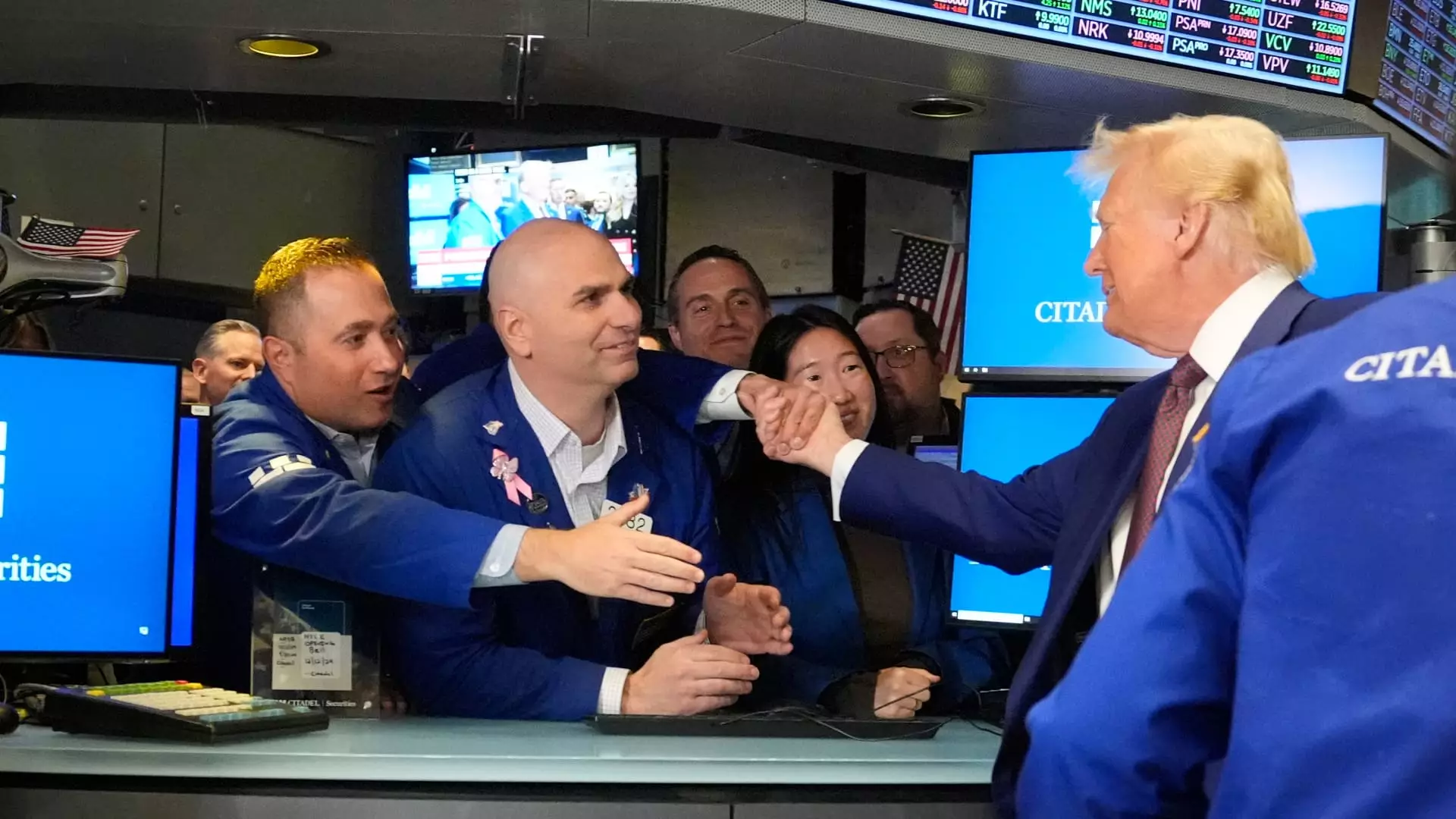The intertwining of politics and economics is a phenomenon that often dictates market sentiment. After a significant electoral victory, President-elect Donald Trump’s response to the investment climate on the New York Stock Exchange provides insight into his ongoing relationship with financial markets. Yet, while he highlighted the importance of the economy, his hesitant approach toward direct market advice reveals deeper complexities at play.
During his first appearance following the ringing of the opening bell, Trump refrained from promoting immediate stock purchases, stating, “I don’t want to get into a situation where they do and we have a dip.” This cautious tone reflects a strategic awareness of market volatility, especially under the scrutiny of political rhetoric. Trump, who had previously leveraged the stock market as a metric of his administration’s success, now seems more guarded. By avoiding explicit calls to action, he acknowledges that markets can be unpredictable and that the implications of market fluctuations extend beyond capital gains; they can influence public confidence and job security.
Historically, Trump’s administration was characterized by aggressive corporate tax cuts and a favorable regulatory environment, which many attribute to the remarkable rise of the S&P 500 by nearly 68%. However, the sustainability of such growth remains a point of contention. The Fed’s previous stance on maintaining low-interest rates created an environment ripe for investment and speculation, which inflated stock values. Yet, the underlying question persists: how much of this growth was organic versus a byproduct of conducive fiscal policy?
Trump’s announcement of further tax cuts for domestic production signals a potential strategy to incentivize investment in American manufacturing. “You pay 21% if you don’t build here. If you do, we’re going to try and get it to 15%,” he declared. This assertion suggests an attempt to align fiscal policy with nationalistic economic goals, aiming to stimulate local job creation while catering to the interests of his business constituency. However, this creates a dual-edged sword — the allure of lower taxes must be balanced against the realities of fiscal responsibility and effectiveness of such policies in achieving long-term growth.
The presence of Wall Street luminaries, including CEOs from major financial institutions, at Trump’s bell-ringing ceremony speaks to the complex relationship between politics and investor confidence. Investors like Bill Ackman emphasized the correlative nature of business success and economic growth, encapsulating the sentiment that “the more successful businesses are, the more the stock market goes up.” His statement underscores a wider belief that optimistic market conditions bolster public morale, which is critical for overall economic health. Yet, this optimism must be tempered with skepticism regarding the administration’s ability to fulfill its ambitious fiscal promises.
As Trump prepares to take office once again, the market looks toward clear direction amidst uncertainty. His reluctance to promote immediate investment echoes a cautious pragmatism, indicative of a leader aware of the underpinning volatility in financial markets. The intertwining of tax policy, investment strategy, and economic performance creates a multifaceted landscape that requires careful navigation. Ultimately, the true measure of any administration’s success will be reflected not merely in stock indices but in the broader economic realities faced by citizens across the nation.

